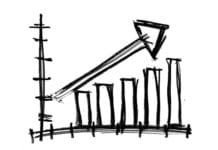Inflation
Inflation denotes a rise in general level of prices. Inflation is thus the rate of increase in the general price level over a period of time. When prices of goods and services increase in an economy, it is said that the economy is experiencing ‘inflation’. Inflation is usually measured over a year and is expressed in percentage terms.
For example, When we say that the current inflation is 4%, it means the general price level has increased by 4% over the last year.
Deflation
It has been observed that inflation the world over have generally remained in positive, implying that the general price level typically rises. There have however been exceptions when there has been a sustained decline in the price level of goods and services. This phenomenon is called deflation.
For example, if we say that the current deflation rate is 4%, it means that the inflation is -4%. In other words, the general price level has fallen by 4% over the last year. Japan suffered from deflation for almost a decade in the 1990s.
Deflation is a very rare phenomenon. High inflation and deflation are both not desirable for an economy. High inflation hurts consumers as it reduces their purchasing power. Suppose during a year, an individual’s income goes up by 5%, but the inflation during the year is 8%. Then the purchasing power of the individual has gone down by 3%, even though his income has risen by 5%. On the other hand, deflation leads the producers of goods and services to slow down their activities, because they get a lower price for their products than they used to earlier. This reduces their profits or even forces them to incur losses. As a result, the economic growth slows down. The economy may even get into a recession. Macroeconomics studies give insights into why inflation rises or falls and what policies help avoid periods of high inflation or deflation.



